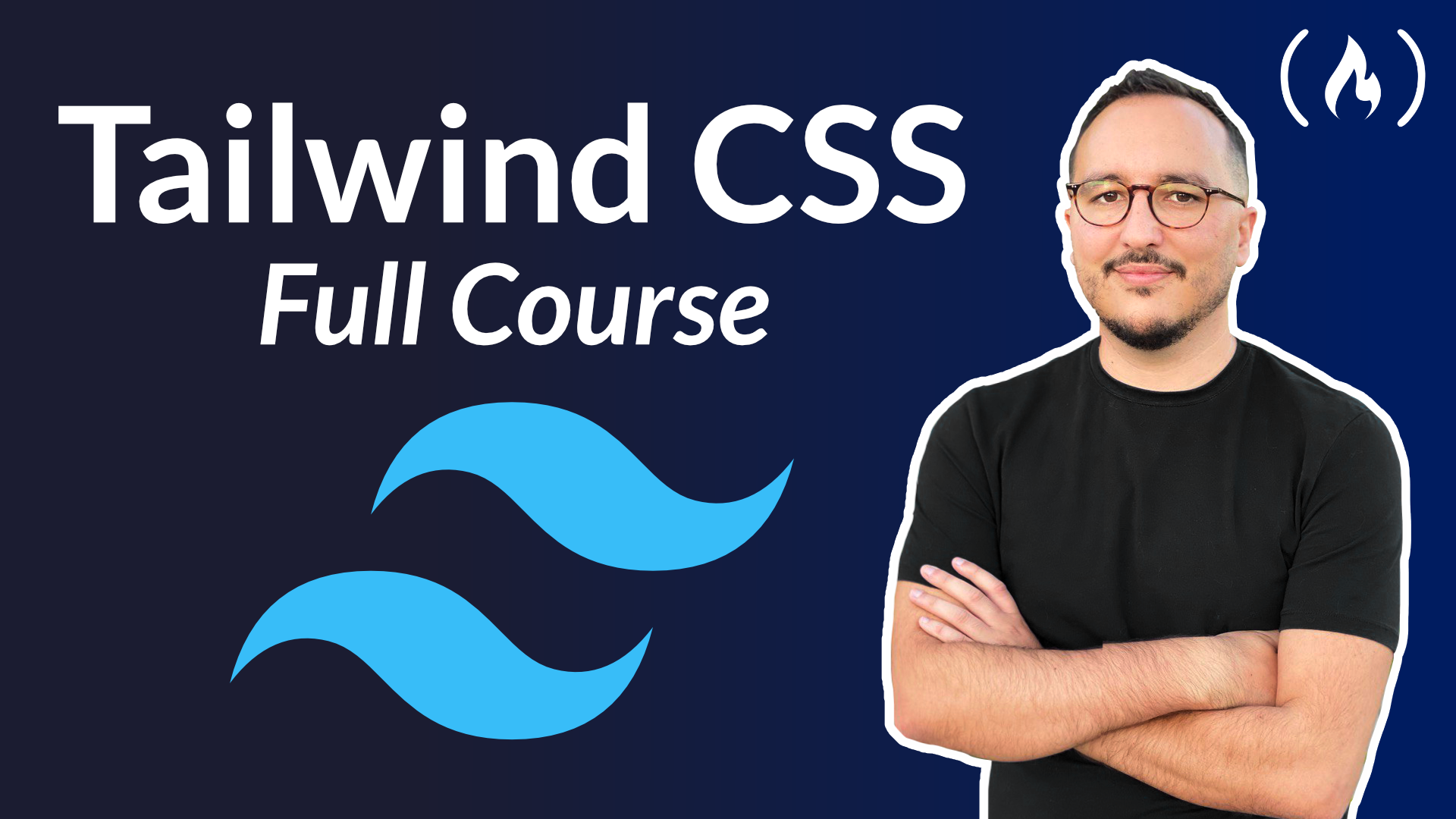Tailwind CSS is a powerful tool for creating beautiful and functional designs.
We just published a video course on the freeCodeCamp.org channel that is designed to introduce you to the basics of using Tailwind CSS, and to help you understand how to use it to create effective and efficient designs for your projects.
Guillaume Duhan created this course. He has been a frontend developer for 10 years and he has created many courses on Udemy and his own YouTube channel.
The course is divided into several sections, each of which covers a different aspect of using Tailwind CSS. The first section, "Setup," will teach you how to install and configure Tailwind CSS in your project. You'll learn how to set up your project to use Tailwind CSS, and how to customize the settings to fit your specific needs.
The next section, "Colors," will cover how to use Tailwind's color utility classes to style your text, backgrounds, and other elements. You'll learn how to use the color palette provided by Tailwind CSS, and how to customize it to match your brand colors.
"Customization" is the next section, in this section you'll learn how to customize the styles provided by Tailwind CSS to better fit your design. You'll learn about how to create custom classes, how to extend the default classes, and how to customize the colors and other settings to fit your design.
"Typography" is the next section, in this section you'll learn how to use Tailwind CSS to create beautiful and consistent typography across your website. You'll learn about the different typography utility classes available, and how to use them to create a consistent and professional look for your text.
"Spaces & sizes" is the next section, in this section you'll learn how to use Tailwind CSS to control the spacing and size of your elements. You'll learn about the different spacing and size utility classes available, and how to use them to create a consistent and professional look for your layout.
The next three sections are "Flex", "Grids", and "Layouts". In these sections, you'll learn how to use Tailwind CSS to create flexible and responsive layouts. You'll learn about the different layout utility classes available, and how to use them to create a responsive and flexible layout that looks great on any device.
In the "Borders" section you'll learn how to use Tailwind CSS to create borders and dividers.
"Effects & filters" is the next section, in this section you'll learn how to use Tailwind CSS to create various effects and filters. You'll learn about the different effect and filter utility classes available, and how to use them to create a consistent and professional look for your layout.
"Animations" is the next section, in this section you'll learn how to use Tailwind CSS to create animations.
"Design System" is the next section, in this section you'll learn how to use Tailwind CSS to create a design system. You'll learn about how to use the utility classes to create a consistent and professional look for your layout, and how to organize and structure your design system to ensure consistency and efficiency in your design process.
Finally, in the "Core concepts" section, you'll learn about the core concepts behind Tailwind CSS, such as the utility-first approach, the use of modular and composable classes, and the importance of accessibility and performance in web design.
And the last section "Dark mode" will be the last one in the course, in this section you'll learn how to use Tailwind CSS to create a dark mode.
By the end of this course, you'll have a solid understanding of how to use Tailwind CSS to create beautiful and functional designs, and you'll be able to use it to create your own projects with confidence.
You can watch the full course on the freeCodeCamp.org YouTube channel (4-hour watch).
